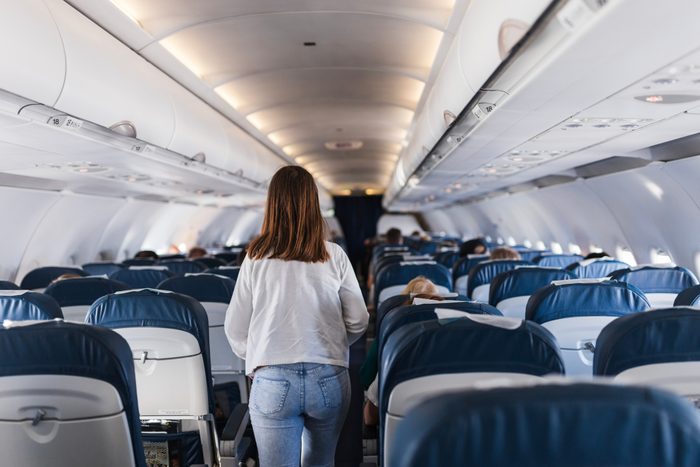
Recent data from the World Health Organization (WHO) reveals that annually, severe flu cases range between three and five million, leading to 290,000 to 650,000 respiratory-related deaths. In the United States, the impact is substantial, with the last flu season seeing up to 670,000 hospitalizations and 58,000 deaths. These figures highlight the significant health burden the flu continues to impose globally and nationally.
Jenna Guthmiller, PhD, an immunologist from the University of Colorado, offers insight on this year’s flu season trends. A noteworthy observation is the later onset of the flu season, possibly a repercussion of the COVID-19 pandemic. During the pandemic’s peak, flu cases dropped significantly, thanks to measures like mask-wearing and social distancing, initially intended to curb COVID-19. However, current trends, according to the latest CDC data, suggest a possible shift back to pre-pandemic flu patterns, with cases typically rising in December, peaking in winter, and receding by spring.
How does the flu spread?
Ravi Jhaveri, MD, an infectious disease expert at Northwestern Medicine, points out that the flu primarily travels through droplets released when someone coughs, sneezes, or talks. If you’re within six feet of someone infected, these droplets can reach you, making close contact a significant risk. Dr. Jhaveri also emphasizes the role of indirect transmission. For example, touching surfaces like keyboards or light switches that have the virus on them and then touching your face can lead to infection.
The Centers for Disease Control and Prevention (CDC) notes that the flu spreads more easily in crowded, poorly ventilated areas. A 2020 study in the scientific journal PLoS Pathogens supports this, showing lower transmission rates in well-ventilated spaces, even when people aren’t taking protective measures. This research spotlights the importance of good air circulation in reducing the spread of the flu, primarily through airborne droplets.
So, where are the high-risk areas for catching the flu? Being aware of these flu hotspots is essential in keeping yourself healthy during flu season.

1. Public transportation
Buses, trains, and subways are flu transmission hotbeds due to close passenger contact and shared surfaces such as handrails and seats. The frequent coming and going of passengers increases the likelihood of encountering the virus. Experts particularly recommend wearing masks during peak flu season to protect against airborne droplets carrying the virus. Traveling during off-peak hours is another effective method to minimize exposure and protect against the flu.

2. Schools and daycares
The nature of activities in schools and daycares—shared toys, group activities, and communal eating spaces—further facilitates the spread of germs. Children often engage in hands-on play, share educational materials, and interact closely with their peers and teachers. While beneficial for social and educational development, these interactions can lead to the easy transfer of germs. Educators and caregivers can mitigate this risk by regularly enforcing hand washing, cleaning, disinfecting surfaces, and encouraging flu vaccinations.
Research: Wash Your Hands Immediately After Touching These 10 Things

3. Offices and workplaces
Office environments, especially open-plan ones, are conducive to flu spread due to employees working in close proximity and sharing spaces like break rooms and meeting rooms. The virus can easily circulate through these networks, further aided by shared items like phones, keyboards, and coffee machines. Additionally, the indoor nature of office work, with limited fresh air exposure, can weaken immune responses, increasing susceptibility to the flu. To alleviate these risks, employers should encourage regular cleaning, promote flu vaccinations, offer flexible sick leave policies, and educate employees about flu prevention.

4. Hospitals and clinics
These facilities are high-risk areas due to the concentration of sick individuals. Strict infection control measures, such as hand hygiene protocols, patient isolation, and staff vaccination, are essential to prevent the spread of the flu within these settings. Visitor restrictions during peak flu season can also be effective.

5. Shopping centers and malls
The high foot traffic and shared surfaces in these areas, like shopping carts, escalator handrails, door handles, and food court tables, make them potential hotspots for flu transmission. Mall management should regularly clean these high-touch areas and provide hand sanitizing stations. Shoppers are encouraged to consider off-peak shopping.

6. Fitness centers and gyms
Gym-goers should wipe down machines before and after use and maintain good personal hygiene. Additionally, the communal areas in gyms, such as locker rooms and showers, are typically humid, allowing the flu virus to survive longer on surfaces. Gym management can contribute by regularly cleaning these areas and improving ventilation.
Epidemiologists’ Top 12 Gym Hygiene Rules Since the Pandemic

7. Restaurants and Cafes
The close seating arrangements and shared items like menus and condiments can facilitate the spread of the flu. Enhanced cleaning protocols and promoting hand hygiene among staff and patrons can help reduce transmission. Spacing out tables and improving air circulation are also beneficial.
The Gross Reason You Should Never Pepper Your Food in Restaurants

8. Airports and airplanes
Large numbers of people from different regions converge in these places, increasing the possibility of flu virus exchange. The high density of travelers in confined spaces like boarding areas, security lines, and shuttle buses creates close contact scenarios where the flu can easily be transmitted from person to person. On airplanes, the situation is compounded by the confined cabin space where passengers sit nearby for extended periods. Although filtered, the recirculated air in the cabin can still carry respiratory droplets from one passenger to another, especially if they are coughing or sneezing.
I Travel Up to 150 Days of the Year—Here Are the 12 Rules That Keep Me Healthy

9. Nursing homes and assisted living facilities
These environments house vulnerable populations, making them susceptible to flu outbreaks. Shared dining areas, group activities, and everyday living spaces foster close interactions among residents, staff, and visitors, facilitating the spread of the flu virus. Preventive measures include enforcing strict cleaning and hygiene protocols, promoting flu vaccinations, and implementing visitor restrictions during the flu season.
These Are the Top 4 Vitamins Doctors Take So They Don’t Get Sick During Virus Season

10. Community events and gatherings
Concerts, sports events, religious services, and festivals are prime venues for transmitting the flu virus due to the high concentration of people in often limited spaces. The nature of many such events, which involve cheering, singing, or talking loudly, can also increase the emission of respiratory droplets into the air, heightening the risk of airborne transmission. During peak flu season, these gatherings can become hotspots for outbreaks, especially if attendees include individuals who are already infected but may not yet show symptoms.
Which Vaccines Do You Need in 2023-24? Here Are Experts’ Recommendations for All Ages

Here’s what you can do
To effectively shield yourself from the flu, consider these preventive strategies:
Vaccination: The cornerstone of flu prevention is vaccination. The flu vaccines for the 2023-2024 season in the U.S. are designed to protect against four different virus strains. The CDC advises annual flu vaccination for everyone over six months old. Dr. Jhaveri emphasizes the vaccine’s importance, noting the variety of available options, including the needle-free FluMist nasal spray vaccine, an excellent alternative for those apprehensive about needles.
Good Hygiene Practices: Frequent hand washing with soap and water, complemented by hand sanitizers, reduces your chances of contracting the flu. It’s also important to avoid touching your face unless your hands are clean.
Stay Updated: Keep up to date with local health announcements and the status of flu outbreaks in your area.
Healthy Lifestyle: Building a robust immune system is critical in combating the flu. This means eating a diet rich in lean proteins, fruits, and vegetables, regularly exercising, and ensuring adequate sleep. Dr. Jhaveri emphasizes the role of daily health practices in fending off infections. He also recommends wearing a mask in public if you’re feeling under the weather to prevent spreading the flu.
Environmental Awareness: Be conscious of your surroundings, especially where the flu is more likely to spread, and practice the recommended preventive measures.
For more wellness updates, subscribe to The Healthy @Reader’s Digest newsletter and follow The Healthy on Facebook and Instagram. Keep reading:

